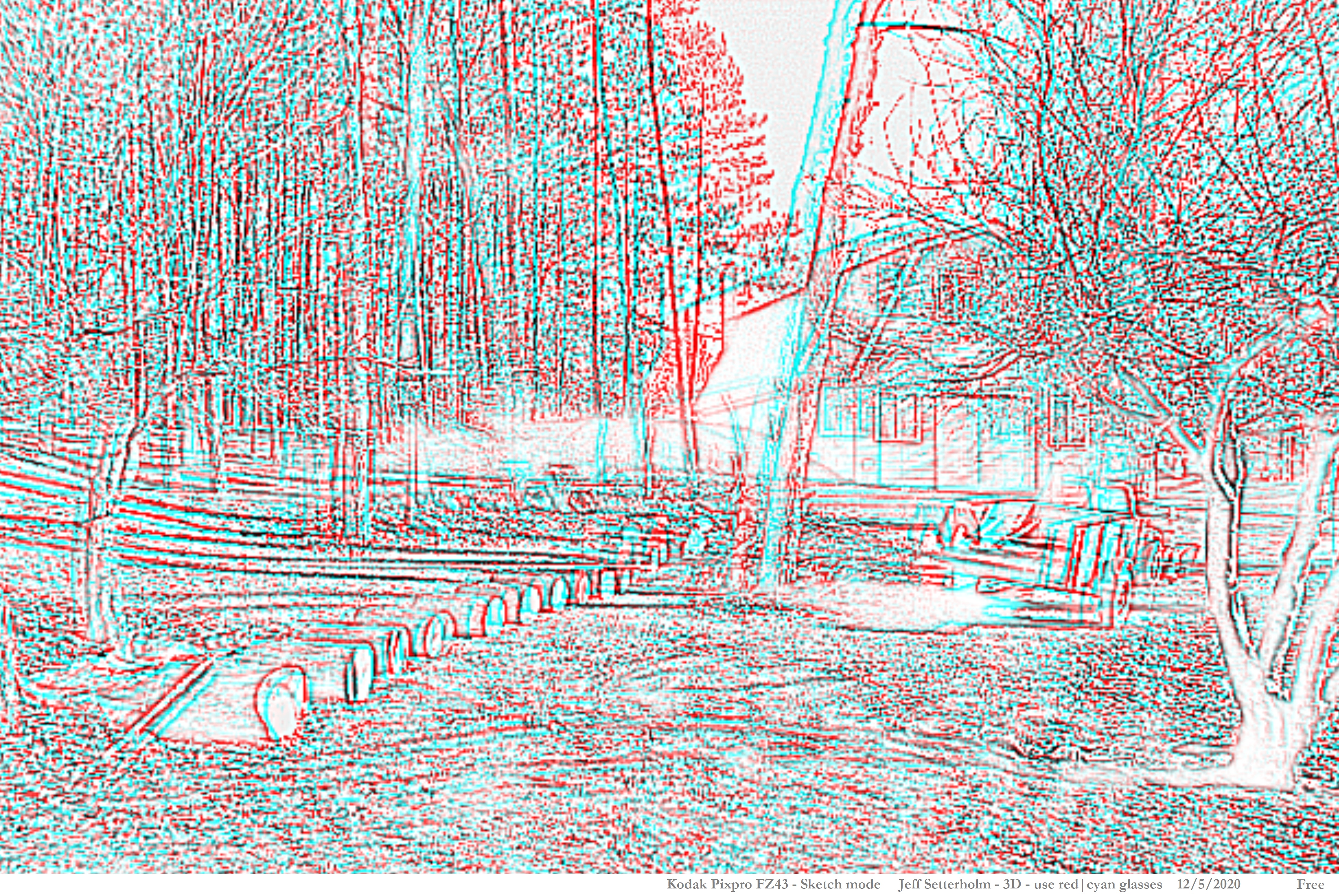RedGB3D ~ All-color-anaglyphs using Red/Cyan glasses
The direct link is: http://ftp.setterholm.com/Images/Red-GreenBlue3D.pdf
These aren’t your Grandmother’s anaglyphs! They’re full color at the depth of convergence of the stereo pair! Images herein named “___-RedGB3D.jpg” are in this format; to see a high-resolution, geodetic example: Click here.
Improved conversion software is found at link: http://ftp.setterholm.com/RedGB3D/20210827-better
The corresponding subdirectory .zip file image is: http://ftp.setterholm.com/RedGB3D/20210827-better.zip …after downloading change the ‘.exf’ extension to ‘.exe’
For 3D imager information: Click here.
20.12.07: http://ftp.setterholm.com/RedGB3D/TechSketch3D-RedGB3D.jpg

The red|cyan 3D sketch image above is formed from two 2D grayscale sketch images, each drawn at the push of a button; Leonardo Da Vinci might have approved! A felled 14″ diameter, 50′ pine tree is shown after being cut into fireplace ~two-footers.
The Kodak FZ43 camera costs $62. at Walmart; delightful 2D grayscale sketches and colorful 180 degree panoramas are synthesized inside the camera and exported as single JPEG images. (The camera also has many other still-frame modes and a video mode.)
For viewing the image above – American Paper Optics LLC – item #AGRCHHV red|cyan handheld 3D viewers (~40 cents each) – work well. Cyan is green+blue. Full color anaglyph 3D images displayed on (red|green|blue) computer monitors become two separate views – (left eye:red|right eye:green&blue). .
On 2020.12.17 I freed my colors template image for evaluating ghosting of color filters vs. monitors and color printers; that helped me figure out RedGB3D back in the day. The link is http://ftp.setterholm.com/RedGB3D/NotAColor.jpg
Based on my experience 2/3 -to- 3/4 of people have usefully strong stereo visual depth perception. The human visual cortex can also synthesize scene depth using the view of an eye that is in motion; see for yourself: close one eye and wobble your head around. Nutating a perspective view of a 3D object achieves the same monocular result. Nutating stereo-viewed objects aids in confirming that one’s visual cortex has guessed a static scene’s depth correctly.